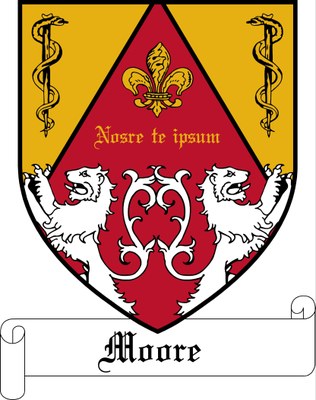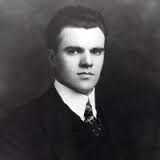Moore College
 John Walker Moore, M.D. (1884-1952) gave spectacular service to the University of Louisville through stellar achievement in many arenas. He was a beloved teacher, outstanding clinician, breakthrough cardiology investigator, and respected Dean (1929-1949), whose stewardship saved the school during times of financial crises. His insights in education, cardiac physiology, and clinical care contribute to this day.
John Walker Moore, M.D. (1884-1952) gave spectacular service to the University of Louisville through stellar achievement in many arenas. He was a beloved teacher, outstanding clinician, breakthrough cardiology investigator, and respected Dean (1929-1949), whose stewardship saved the school during times of financial crises. His insights in education, cardiac physiology, and clinical care contribute to this day.
John Walker Moore was born in rural South Carolina to James and Hattie Moore in 1884. After local primary education, he graduated from North Carolina’s Davidson College in 1906. After preliminary medical work at the University of North Carolina, he finished his M.D. at the University of Pennsylvania in 1912. He joined UofL as Instructor in pathology and bacteriology in 1915. In the first World War, he served from 1917 to 1919 at the U.S. Army Hospital Center in Nantes, France, where he directed the laboratory services, and where he met his wife, Anna Kent Moore. On return to UofL, he rose rapidly as the first full-time Internal Medicine faculty member, Professor of Medical Research (1920), and Professor and Chair of the Department of Medicine (1923). Although thoroughly knowledgeable in advanced laboratory sciences, his teaching emphasized importance of bedside history and examination skills in patient care. An astute diagnostician, he was renowned for making challenging diagnoses from tiny clues. Walking down a Louisville General Hospital ward with his students, he heard a patient cough, and exclaimed that the sound characteristics indicated the patient to have an aortic aneurysm caused by syphilis, which subsequently proved correct. Deeply committed to advancing the art of education, he organized the UofL clinical experience into teaching teams, a substantially more effective program that he called the Student Preceptor System. He advocated this nationally, which led to widespread acceptance and Presidency of the American Association of Medical Colleges (1946).
Dr. Moore’s landmark research contribution was development of the dye/indicator dilution measurement of cardiac output in humans. Based on theories of Adolf Fick, M.D. of Würzburg and animal studies by George Stewart, Ph.D. at Western Reserve University, Moore developed the first accurate human cardiac output measurement. These studies became a milestone in cardiology history, which began with William Harvey’s 1628 discovery of circulation and led to today’s sophisticated cardiac care. His laboratory team included UofL’s outstanding physiologist, William Hamilton, Ph.D., surgeon R. Glenn Spurling, M.D., and internist J. Murray Kinsman, M.D. All would achieve distinguished careers, with Dr. Spurling becoming a pioneering UofL neurosurgeon, and Dr. Kinsman becoming an effective UofL medical Dean following Dr. Moore.
 Dr. Moore was appointed the first full-time medical Dean at UofL in 1929, and he provided essential leadership in an era of sparse resources. He was tireless in endeavors to attract State funding for the school (then supported only locally), and he achieved this as a first in 1948. His 20-year Deanship brought great expansion of UofL’s full-time medical faculty, effective curricular revisions, and the first UofL medical research institute. Throughout all of this, teaching was always his highest priority, and he was beloved by students.
Dr. Moore was appointed the first full-time medical Dean at UofL in 1929, and he provided essential leadership in an era of sparse resources. He was tireless in endeavors to attract State funding for the school (then supported only locally), and he achieved this as a first in 1948. His 20-year Deanship brought great expansion of UofL’s full-time medical faculty, effective curricular revisions, and the first UofL medical research institute. Throughout all of this, teaching was always his highest priority, and he was beloved by students.
After Dr. Moore’s 1952 death, Dr. Kinsman praised Dr. Moore’s intolerance of dishonesty, selfishness and pettiness; his constant good nature; and his reputation of being “beloved, as well as respected.” The School of Medicine is proud of the legacy of Dr. John Walker Moore, and has named this college in his honor.
- Gordon R. Tobin, M.D.